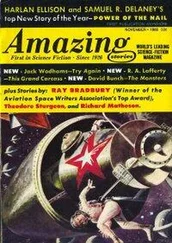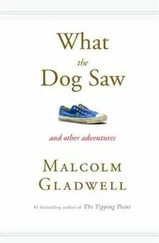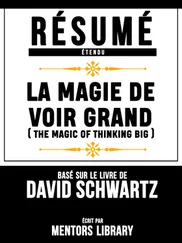Malcolm Gladwell - Blink - The Power of Thinking Without Thinking
Здесь есть возможность читать онлайн «Malcolm Gladwell - Blink - The Power of Thinking Without Thinking» весь текст электронной книги совершенно бесплатно (целиком полную версию без сокращений). В некоторых случаях можно слушать аудио, скачать через торрент в формате fb2 и присутствует краткое содержание. Жанр: Культурология, Психология, на английском языке. Описание произведения, (предисловие) а так же отзывы посетителей доступны на портале библиотеки ЛибКат.
- Название:Blink: The Power of Thinking Without Thinking
- Автор:
- Жанр:
- Год:неизвестен
- ISBN:нет данных
- Рейтинг книги:3 / 5. Голосов: 1
-
Избранное:Добавить в избранное
- Отзывы:
-
Ваша оценка:
- 60
- 1
- 2
- 3
- 4
- 5
Blink: The Power of Thinking Without Thinking: краткое содержание, описание и аннотация
Предлагаем к чтению аннотацию, описание, краткое содержание или предисловие (зависит от того, что написал сам автор книги «Blink: The Power of Thinking Without Thinking»). Если вы не нашли необходимую информацию о книге — напишите в комментариях, мы постараемся отыскать её.
Blink: The Power of Thinking Without Thinking — читать онлайн бесплатно полную книгу (весь текст) целиком
Ниже представлен текст книги, разбитый по страницам. Система сохранения места последней прочитанной страницы, позволяет с удобством читать онлайн бесплатно книгу «Blink: The Power of Thinking Without Thinking», без необходимости каждый раз заново искать на чём Вы остановились. Поставьте закладку, и сможете в любой момент перейти на страницу, на которой закончили чтение.
Интервал:
Закладка:
For example, at the Columbia session, I paid particular attention to a young woman with pale skin and blond, curly hair and a tall, energetic man with green eyes and long brown hair. I don’t know their names, but let’s call them Mary and John. I watched them for the duration of their date, and it was immediately clear that Mary really liked John and John really liked Mary. John sat down at Mary’s table. Their eyes locked. She looked down shyly. She seemed a little nervous. She leaned forward in her chair. It seemed, from the outside, like a perfectly straightforward case of instant attraction. But let’s dig below the surface and ask a few simple questions. First of all, did Mary’s assessment of John’s personality match the personality that she said she wanted in a man before the evening started? In other words, how good is Mary at predicting what she likes in a man? Fisman and Iyengar can answer that question really easily, and what they find when they compare what speed-daters say they want with what they are actually attracted to in the moment is that those two things don’t match. For example, if Mary said at the start of the evening that she wanted someone intelligent and sincere, that in no way means she’ll be attracted only to intelligent and sincere men. It’s just as likely that John, whom she likes more than anyone else, could turn out to be attractive and funny but not particularly sincere or smart at all. Second, if all the men Mary ends up liking during the speed-dating are more attractive and funny than they are smart and sincere, on the next day, when she’s asked to describe her perfect man, Mary will say that she likes attractive and funny men. But that’s just the next day. If you ask her again a month later, she’ll be back to saying that she wants intelligent and sincere.
You can be forgiven if you found the previous paragraph confusing. It is confusing: Mary says that she wants a certain kind of person. But then she is given a roomful of choices and she meets someone whom she really likes, and in that instant she completely changes her mind about what kind of person she wants. But then a month passes, and she goes back to what she originally said she wanted. So what does Mary really want in a man?
“I don’t know,” Iyengar said when I asked her that question. “Is the real me the one that I described beforehand?”
She paused, and Fisman spoke up: “No, the real me is the me revealed by my actions. That’s what an economist would say.”
Iyengar looked puzzled. “I don’t know that’s what a psychologist would say.”
They couldn’t agree. But then, that’s because there isn’t a right answer. Mary has an idea about what she wants in a man, and that idea isn’t wrong. It’s just incomplete. The description that she starts with is her conscious ideal: what she believes she wants when she sits down and thinks about it. But what she cannot be as certain about are the criteria she uses to form her preferences in that first instant of meeting someone face-to-face. That information is behind the locked door.
Braden has had a similar experience in his work with professional athletes. Over the years, he has made a point of talking to as many of the world’s top tennis players as possible, asking them questions about why and how they play the way they do, and invariably he comes away disappointed. “Out of all the research that we’ve done with top players, we haven’t found a single player who is consistent in knowing and explaining exactly what he does,” Braden says. “They give different answers at different times, or they have answers that simply are not meaningful.” One of the things he does, for instance, is videotape top tennis players and then digitize their movements, breaking them down frame by frame on a computer so that he knows, say, precisely how many degrees Pete Sampras rotates his shoulder on a cross-court backhand.
One of Braden’s digitized videotapes is of the tennis great Andre Agassi hitting a forehand. The image has been stripped down. Agassi has been reduced to a skeleton, so that as he moves to hit the ball, the movement of every joint in his body is clearly visible and measurable. The Agassi tape is a perfect illustration of our inability to describe how we behave in the moment. “Almost every pro in the world says that he uses his wrist to roll the racket over the ball when he hits a forehand,” Braden says. “Why? What are they seeing? Look”—and here Braden points to the screen—“see when he hits the ball? We can tell with digitized imaging whether a wrist turns an eighth of a degree. But players almost never move their wrist at all. Look how fixed it is. He doesn’t move his wrist until long after the ball is hit. He thinks he’s moving it at impact, but he’s actually not moving it until long after impact. How can so many people be fooled? People are going to coaches and paying hundreds of dollars to be taught how to roll their wrist over the ball, and all that’s happening is that the number of injuries to the arm is exploding.”
Braden found the same problem with the baseball player Ted Williams. Williams was perhaps the greatest hitter of all time, a man revered for his knowledge and insight into the art of hitting. One thing he always said was that he could look the ball onto the bat, that he could track it right to the point where he made contact. But Braden knew from his work in tennis that that is impossible. In the final five feet of a tennis ball’s flight toward a player, the ball is far too close and moving much too fast to be seen. The player, at that moment, is effectively blind. The same is true with baseball. No one can look a ball onto the bat. “I met with Ted Williams once,” Braden says. “We both worked for Sears and were both appearing at the same event. I said, ‘Gee, Ted. We just did a study that showed that human beings can’t track the ball onto the bat. It’s a three-millisecond event.’ And he was honest. He said, ‘Well, I guess it just seemed like I could do that.’”
Ted Williams could hit a baseball as well as anyone in history, and he could explain with utter confidence how to do it. But his explanation did not match his actions, just as Mary’s explanation for what she wanted in a man did not necessarily match who she was attracted to in the moment. We have, as human beings, a storytelling problem. We’re a bit too quick to come up with explanations for things we don’t really have an explanation for.
Many years ago, the psychologist Norman R. F. Maier hung two long ropes from the ceiling of a room that was filled with all kinds of different tools, objects, and furniture. The ropes were far enough apart that if you held the end of one rope, you couldn’t get close enough to grab hold of the other rope. Everyone who came into the room was asked the same question: How many different ways can you come up with for tying the ends of those two ropes together? There are four possible solutions to this problem. One is to stretch one rope as far as possible toward the other, anchor it to an object, such as a chair, and then go and get the second rope. Another is to take a third length, such as an extension cord, and tie it to the end of one of the ropes so that it will be long enough to reach the other rope. A third strategy is to grab one rope in one hand and use an implement, such as a long pole, to pull the other rope toward you. What Maier found is that most people figured out those three solutions pretty easily. But the fourth solution—to swing one rope back and forth like a pendulum and then grab hold of the other rope—occurred to only a few people. The rest were stumped. Maier let them sit and stew for ten minutes and then, without saying anything, he walked across the room toward the window and casually brushed one of the ropes, setting it in motion back and forth. Sure enough, after he did that, most people suddenly said aha! and came up with the pendulum solution. But when Maier asked all those people to describe how they figured it out, only one of them gave the right reason. As Maier wrote: “They made such statements as: ‘It just dawned on me’; ‘It was the only thing left’; ‘I just realized the cord would swing if I fastened a weight to it’; ‘Perhaps a course in physics suggested it to me’; ‘I tried to think of a way to get the cord over here, and the only way was to make it swing over.’ A professor of Psychology reported as follows: ‘Having exhausted everything else, the next thing was to swing it. I thought of the situation of swinging across a river. I had imagery of monkeys swinging from trees. This imagery appeared simultaneously with the solution. The idea appeared complete.’”
Читать дальшеИнтервал:
Закладка:
Похожие книги на «Blink: The Power of Thinking Without Thinking»
Представляем Вашему вниманию похожие книги на «Blink: The Power of Thinking Without Thinking» списком для выбора. Мы отобрали схожую по названию и смыслу литературу в надежде предоставить читателям больше вариантов отыскать новые, интересные, ещё непрочитанные произведения.
Обсуждение, отзывы о книге «Blink: The Power of Thinking Without Thinking» и просто собственные мнения читателей. Оставьте ваши комментарии, напишите, что Вы думаете о произведении, его смысле или главных героях. Укажите что конкретно понравилось, а что нет, и почему Вы так считаете.












